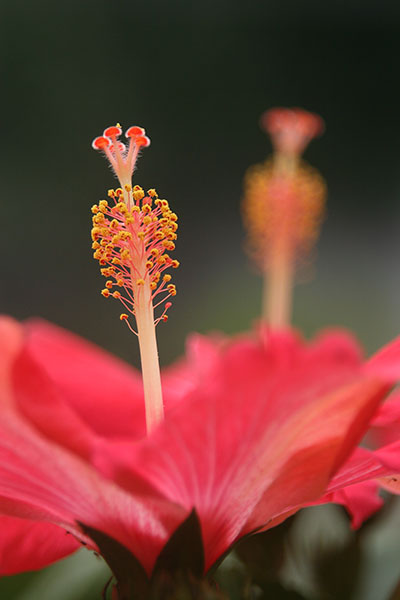 These hibiscus flowers were photographed during the trip to Sylvan Heights Bird Park that I talk about here, and were part of the selection of images that I’d prepared for that post – which probably should’ve taken place in August, but didn’t. When the end of the year was rolling around, I pulled this image from that now-ancient photo collection and inserted it into the color gallery for potential use in the December 31st post – but decided in favor of others.
These hibiscus flowers were photographed during the trip to Sylvan Heights Bird Park that I talk about here, and were part of the selection of images that I’d prepared for that post – which probably should’ve taken place in August, but didn’t. When the end of the year was rolling around, I pulled this image from that now-ancient photo collection and inserted it into the color gallery for potential use in the December 31st post – but decided in favor of others.
Then, I went ahead and posted about the Sylvan Heights trip after all, and could have included it within, but didn’t for two reasons. The first is that most of the other images were vertical too, which makes laying out the post tricky sometimes (yes of course I think about this when writing them – don’t you?) And the second is, I had already started the Monday color posts and needed the red within that gallery. So here it is.
I had started to type something along the lines of, “One of these days, I’ll look up what pollinates a hibiscus flower,” because that shape is curious. Many flowers have shapes that ensure that anything going for the nectar has to contact the pollen, but hibiscus seem to put it out of reach, as if trying to keep it conveniently out of the way of any visitors. Then I decided to go ahead and research it right now, and found that the depth of the trumpet helps a lot here, in that whatever is seeking nectar has to be fairly large as pollinators go in order to reach down that far, and thus may contact the pollen and carry it to other flowers. Or just to the red pistils at the top, since hibiscus can self-germinate, and do not need to receive pollen from an entirely different plant like many species do. It is also possible that this shape helps with pollen spread by wind, being wide open like this, and there’s even a chance that the shape of the petals helps this too, generating more of a vortex within the bloom itself. If you look close, you can see that this one has had a measure of success, one way or another, since a lone pollen grain can be seen in contact with the pistil.
Don’t ask me why something that spreads pollen is a pollinator. I suspect that some of the people who make up words are anarchists and don’t like the idea of English rules.




















































